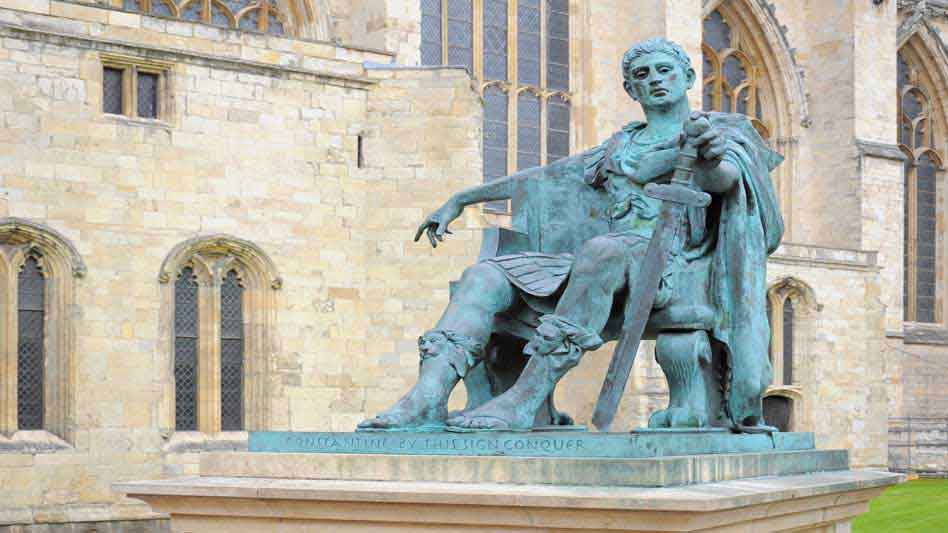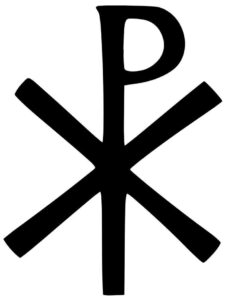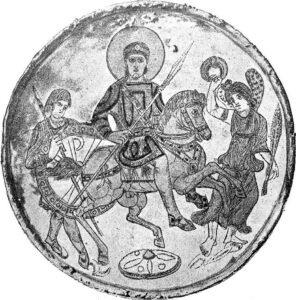A Date To Memorize – AD 313 The Edict Of Milan
The period from AD 285 to AD 325 could be described as the worst of times and the best of times for Christianity. From 295-305, Christians suffered unprecedented persecution. But miraculously, a confluence of unlikely events came together that catapulted Christianity throughout the Roman empire, allowing the church an unprecedented time of peace and growth.
Click here to learn more about DTM Feature Posts.
AD 285-305 – Diocletian, Emperor Of The Roman Empire
Emperor Diocletian ruled Rome between 285-305. Like many before him, he wanted to stabilize and unify the empire. Seeing the church as divisive and disruptive, he hoped to eliminate Christianity, thus reducing religious conflict. History records that persecution under Diocletian (beginning in 303, with the persecution edict officially rescinded in 311) was the bloodiest and most barbaric of all.
Committed to the ruling philosophy of Pax Romana, “Roman Peace” and the efficient rule of the empire, Diocletian sought to establish a thorough empirical administration. He divided the enormous realm into four districts and set co-emperors over each.
The westernmost district was given to Constantius Chlorus, the father of Constantine.
AD 305 – Diocletian Vacates The Throne
In AD 305, Diocletian vacated the throne leaving 3 co-emperors (a flurry of names as different people assumed the positions) to fight for the right to become the next emperor.
AD 306 – Constantine Succeeds His Father
In 306, Constantine succeeded his father, Constantius Chlorus, as co-emperor.
AD 312 – Constantine’s Conversion
In 312, Constantine saw a vision that changed his entire life. Little did he know that this vision would also change the entire world.
In the vision, Constantine was praying to the god of his father when “he saw with his own eyes the trophy of a cross of light in the heavens, above the sun, and an inscription, CONQUER BY THIS attached to it… Then in his sleep the Christ of God appeared to him with the sign which he had seen in the heavens and commanded him to make a likeness of that sign which he had seen in the heavens, and to use it as a safeguard in all engagements with his enemies.”
The sign in Constantine’s vision – Chi Rho, the first two letters of Christ’s name in Greek. The symbol is also called a “labarum.”
After this vision, Constantine adopted the sign as his personal insignia, the labarum, the intertwined first two letters of Christ’s name in Greek, Chi Rho. This emblem was placed on the swords of Constantine’s army.
AD 312 – Constantine Defeats Co-Emperor Maxentius
In AD 312 Constantine defeated Maxentius at the battle of Milvian Bridge, an area north of Rome. Some historians claim that Constantine’s victory at Milvian Bridge was more important for the history of Christianity than for the history of Rome.
AD 313 – Constantine And Licinius Legalized All Peaceful Religions
After the defeat of Maxentius, co-emperors Constantine and Licinius remained. In 313, remarkably, Constantine arranged with Licinius to issue a decree legalizing the Christian faith and making toleration of all peaceful religions the rule throughout the empire.
This momentous agreement is called The Edict of Milan.
Missorium depicting Emperor Constantine’s son Constantius II accompanied by a guardsman with the Chi-Rho depicted on his shield (at left, behind the horse). From Wikipedia “Chi Rho.”
A Date to Memorize – AD 313
AD 313 – The Edict of Milan – Agreement made between the Roman Co-Emperors Constantine and Licinius, legalizing the Christian faith and making toleration of all peaceful religions the rule throughout the empire.
From “Edict of Milan” in The Oxford Dictionary of the Church:
The document so called is in fact a circular of 313 to provincial governors issued in Bithynia by the Emperor Licinius. In accordance with an agreement made with Constantine at Milan, he extended to the Eastern provinces freedom of worship for all, including Christians, and the restitution of possessions lost by the Churches since the persecution of 303, concessions previously made in the West by Constantine and Maxentius. It is preserved in the writings of early Christian writer and counsel to Emperor Constantine, Lactantius (De Mortibus Persecutorum), and by early Christian historian and bishop Eusebius (Ecclesiastical History, Book 10, Chapter 5, Copies of Imperial Laws).
Dates Before And After AD 313
From the time of Nero’s persecution in AD 64 until AD 313, Christians suffered many periods of persecution, sometimes lasting for decades. After the Edict of Milan granted religious freedom to all peace-loving religions, and especially so to Christianity who had undergone much hostility and injustice, many prominent early church fathers arose–Athanasius, Basil The Great, Gregory Nazianzen, Jerome, Ambrose, John Chrysostom, and Augustine, to name only a few.
Before
150 – Montanism and Gnosticism arise
203 – Martyrdom of Perpetua and Felicitas in Carthage
215 – Origen (185-254), the great Alexandrian theologian, begins traveling, commending Christianity to high ranking officials throughout the Roman Empire
215 – Hippolytus of Rome compiles the Apostolic Tradition
260 – Eusebius born (d. 340)
After
314 – Emperor Constantine Asks Several Synods To Resolve Church Conflicts
As Constantine continued to gain power in the empire so his determination to promote the Christian faith. As early as 314 Constantine had asked several synods of bishops to settle internal church friction over questions remaining from the persecution by Diocletian—should Christians who denounced the faith in order to avoid persecution be excommunicated? Two years later he himself heard appeals from these cases.
324 – Constantine Becomes Sole Emperor And An Advocate For Christianity
Constantine also grew more powerful in affairs of state, and in 324 he became Rome’s sole emperor. As far as emperors go, Constantine too sought to uphold the imperial standard of Pax Romana. As his predecessors, he too was concerned with the stability of the empire and conflict resolution caused by religious discord.
This led to one of the most famous dates in Christian History—AD 325, The Council of Nicaea.
325 – First Church Council, The Council of Nicaea
405 – Jerome completes the Vulgate, the Latin translation of the Bible
451 – Council of Chalcedon
The prominent church historian Eusebius documented many things from this period, including the Imperial Law known as the Edict of Milan. This edict can be read online here. In addition, the writings of Eusebius, including the Edict of Milan, are available on Kindle for only .99.
We walk by faith and not by sight during the best of times and the worst of times trusting that we see only dimly, while God sees clearly and finally.
Until next time –
The grace of the Lord Jesus Christ and the love of God and the fellowship of the Holy Spirit be with you all. (2 Cor. 13:14)











